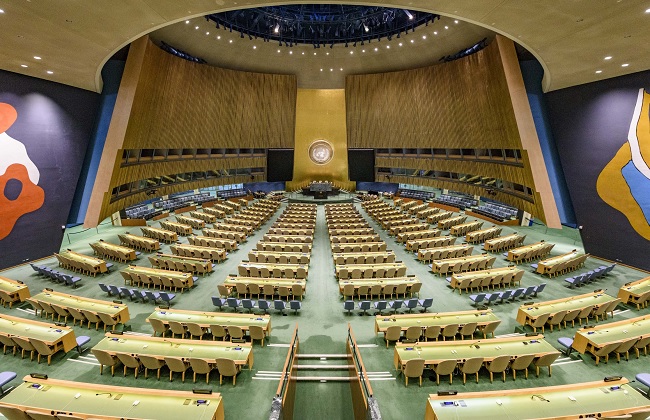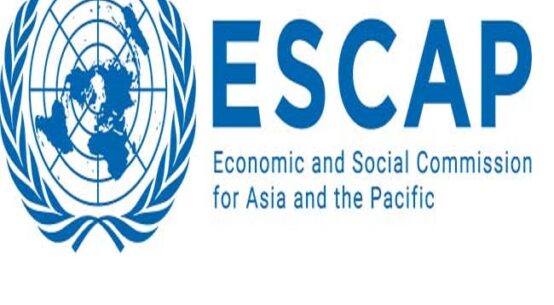
UN General Secretary General António Guterres warned of the wide-ranging impacts of climate change on a visit to the Pacific islands of Samoa and Tonga.
“(Climate change) spells disaster: wide-ranging and brutal impacts, coming far thicker and faster than we can adapt to them—destroying entire coastal communities,” said Guterres, speaking at a meeting of Pacific Island leaders in Tonga.
Rising sea levels and warming ocean temperatures pose a threat to the stability of Pacific Island nations and their socio-economic viability. Two new reports from the United Nations and the World Meteorological Organization (WMO) shed light on the accelerating rate of sea-level rise and warn of its impact on coastal areas worldwide.
A report from WMO, The State of Climate Change in the Southwest Pacific 2023, reveals that sea levels in that region are higher than the global average. Among other factors, Sea-level rise is among the consequences of global warming and climate change shaping the fabric of seas and oceans. The UN Climate Action Team’s new technical brief, Surging Seas in a warming world, provides a breakdown of sea-level rise through scientific reporting and considers the implication on a broader scale.
While in Tonga for the 53rd Pacific Islands Forum Leaders’ Meeting, Guterres warned that rising sea levels would have an “unparalleled power” to wreak havoc on coastal cities and their economies.
“The reason is clear: greenhouse gases—overwhelmingly generated by burning fossil fuels—are cooking our planet,” said Guterres. “And the sea is taking the heat—literally.”
Sea-level rise poses a global threat to low-lying islands and coastal communities connected to the sea. In this area, nearly 11 percent of the world’s population (900 million) lives on continental or island areas connected to the sea, which also hosts a great concentration of the world’s economic activities and cultural heritage sites. Coastal megacities across all continents, such as Bangkok, Dhaka, Buenos Aires, London, Tokyo, and New York City, face risks to their safety and sustainability. Sea-level rise erodes land, destroys infrastructure, and disrupts lives and livelihoods.
Sea-level rise, however, has a disproportionately negative impact on small island developing states (SIDs), particularly those in the Pacific. Many islands in the Pacific are dealing with a sea-level change of 15 cm between 1993 and 2023, much higher than the global mean sea-level rise of 9.4 cm. Based on a projection of 3 degrees Celsius in global temperatures, sea-level rise in the Pacific will increase by an additional 15 cm between 2020 and 2050. Yet Pacific Islands only account for 0.02 percent of global emissions. The UN special brief notes that at least 90 percent of Pacific Islanders, or 700 million people, live within five kilometers of the coastline.
The average rate of sea-level rise has more than doubled since the 1990s. Between 1993 and 2002, the rate was 0.21 percent. The rate from 2014 to 2022 was measured at 0.48 percent. This increasing rate has been attributed to the warming of oceans and the loss from ice sheets in Greenland and the Antarctic.
Along with rising sea levels, ocean surface warming is a grave concern for the Pacific. Between 1981 and 2023, nearly the entire South-West Pacific region reached rates of 0.4 degrees Celsius, about three times faster than the global surface ocean warming rate of 0.15 percent over the same period. The WMO also identified that marine heatwaves—periods of unusually high ocean temperatures—increased in intensity and duration in much of the Pacific over the last decade. It will have far-reaching adverse effects on fish stocks and coral reef resilience, which will impact ecosystems, economies and livelihoods in the Pacific.
“The [Pacific] ocean has taken up more than 90 percent of the excess heat trapped by greenhouse gases and is undergoing changes that will be irreversible for centuries to come. Human activities have weakened the capacity of the ocean to sustain and protect us and—through sea level rise—are transforming a lifelong friend into a growing threat,” said WMO Secretary-General Celeste Saulo.
For some nations, the loss of land due to climate change and rising sea levels may render them uninhabitable. According to the UN report, this would raise the implications of relocation, sovereignty and statehood. Island nations across the Pacific are already experiencing a loss of life and land erosion due to sea-level rise. They are also particularly vulnerable to tropical cyclones and the increasing frequency and severity of coastal flooding. Therefore, adaptation to the impacts of sea-level rise and climate disasters needs to be scaled up.
As Guterres warned in his statement: “Without new adaptation and protection measures, economic damage from coastal flooding could amount to trillions of dollars.”
Guterres appealed that countries need to step up in their commitments towards climate action by presenting new Nationally Determined Contributions (NDCs) by 2025. This is an opportunity for all stakeholders in climate action to take immediate action to cut emissions and build up resilience to climate impacts. Guterres called for governments to increase finance and support vulnerable countries, singling out developed countries to honor their financial commitments, such as doubling adaptation finance to USD 40 billion by 2025. He also called on countries to support new financial goals during this year’s UN Climate Conference (COP29).
By 2027, every person on Earth should be protected through effective early warning systems, Guterres added. This would be done through investing in and building capacity of local climate data services and knowledge, which can help inform early warning systems and long-term adaptation solutions.
“The world must look to the Pacific and listen to the science,” said Guterres. “This is a crazy situation: Rising seas are a crisis entirely of humanity’s making. A crisis that will soon swell to an almost unimaginable scale, with no lifeboat to take us back to safety. But if we save the Pacific, we also save ourselves.”
Naureen Hossain is an IPS correspondent based in New York.

